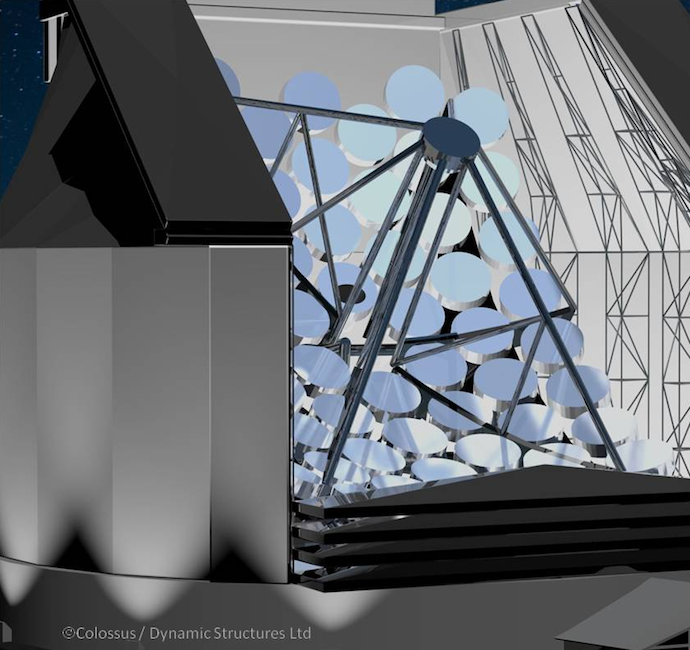Heat-Seaking Telescope Could Identify Alien Civilizations


The aliens Will Smith battles in “Independence Day” weren’t friendly life forms looking to make friends and share information. If you recall, the spacefaring creatures traveled from planet to planet, devouring natural resources like extra-terrestrial locusts. And famed British scientist Stephen Hawking says tales of such nomadic civilizations may not be far from the truth.
“Such advanced aliens would perhaps become nomads, looking to conquer and colonize whatever planets they could reach,” Hawking said in an episode of Discovery’s “Into the Universe with Stephen Hawking.” “If so, it makes sense for them to exploit each new planet for material to build more spaceships so they could move on. Who knows what the limits would be?”
Therefore, Hawking suggests humanity remain cautious when sending out signals in its pursuit of life in the universe, as doing so could alert more advanced civilizations to our presence. The proposed billion-dollar megatelescope Colossus, however, will be capable of sensing heat exuded by alien civilizations without alerting them to Earth’s presence, according to a concept recently published in “Astronomy” magazine.
The Colossus—set to measure 250 feet when completed—will use thin mirror technology and large aperture mirror segments to detect cities and other signs of life on planets as far as 60 to 70 light years from Earth. While other telescopes have focused on seeking beamed signals from far-away planets—with little-to-no success in the past 40 years—the Colossus, based on physicist Freeman Dyson’s 1960s concept, will act as a passive receiver.
Dyson theorized advanced civilizations that could harness a great deal more of their stars’ energy than Earth captures from our Sun. Aliens would surround their star with a structure, the “Dyson Spere,” that would harness all needed energy before sending the excess off into space. Stars in the structures would appear faint to eyes on Earth, but would radiate strong infrared signals.
“Similarly, an exoplanet that was optically dark, but thermally bright, would be evidence of extraterrestrial civilization,” Jeff Kuhn, an astronomer at the University of Hawaii’s Institute of Astronomy and member of the Colossus proposal team, told Space.com.
Under the theory, Kuhn’s team is not focused on finding stars, but rather examining the surfaces of alien planets. Currently, Kuhn told Space.com, few have seen images of exoplanets. Because they’re faint, their parent stars’ light often overwhelms them. Kuhn says they can be observed, however, with a Colossus-sized mirror.
He says even the largest telescopes built in the next 100 years will not be able to directly provide images cities or other organized structures on exoplanets. Local heat sources, on the other hand, might be visible.
“We do that by using the fact that the planet has to rotate, and that civilization is clustered either by the formation of continents or the use of land, which is agrarian versus organized into population centers,” Kuhn told Space.com. “The assumption we make is that civilizations will cluster their heat use. It won’t be uniform; they distribute it.”
Scientists will also probe heat sources in at least two different wavelengths to determine the temperature and presence of volcanoes and other natural features. Heat sources only slightly above the planet’s natural radiation are likely to be signs of civilization, Kuhn said.
Scientists are on the verge of making the Colossus a reality… but for one obstacle.
“If we had an investor come and say ‘look, here are the resources you need,’ we could have the telescope built within five years,” said Kuhn.
Currently, Kuhn’s team is privately funded, but hopes to obtain money from the six submitted patents of the telescope’s optical technology, as well. It is also open to partnerships with other institutions, such as the Search for Extraterrestrial Intelligence Institute, although that organization is presently focused on radio telescopes.
The Colossus team currently includes entrepreneur Caisey Harlington—who came up with the concept and started building a team capable of building the Colossus two years ago—as well as David Halliday, founder of Canada’s Dynamic Structures, a member who has built Suburu telescopes and another who helped build Hawaii’s Keck scope. The group has also partnered with Germany’s Kiepenheuer Institute for Solar Physics, the National University of Mexico in Ensenada, Tohoku University in Japan, the University of Hawaii Institute for Astronomy, the University of Lyon in France and Harlingten’s own Innovative Optics, reports Space.com.
After publishing the concept, the group now plans to create a more detailed design and seek funding for the project, which has no planned start date.









































